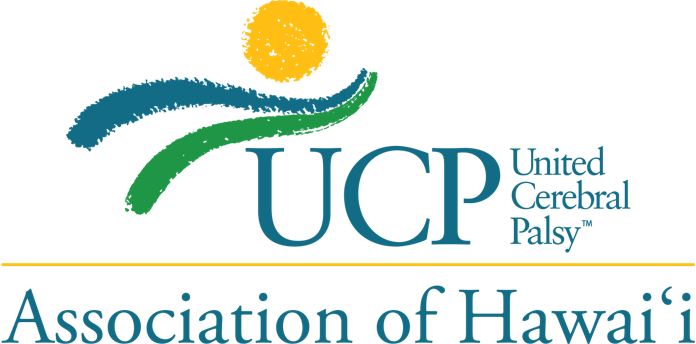About Cerebral Palsy
The term “cerebral palsy” describes chronic conditions affecting body movement and muscle coordination. “Cerebral” refers to the brain and “palsy” to muscle weakness or poor control.
What are the forms of cerebral palsy?
There are four forms of cerebral palsy.
● Spastic Cerebral Palsy: This is the most common form of cerebral palsy. Symptoms include tight muscles and awkward movements.
● Dyskinetic Cerebral Palsy: Symptoms include involuntary movements.
● Ataxic Cerebral Palsy: Symptoms include challenges with balance, depth perception, and shaky movements.
● Mixed Cerebral Palsy: A combination of other cerebral palsy forms.
Other impairments can include drooling, chewing and swallowing difficulties, bladder dysfunction, gastrointestinal issues, constipation, respiratory issues, sleeping, and pain.
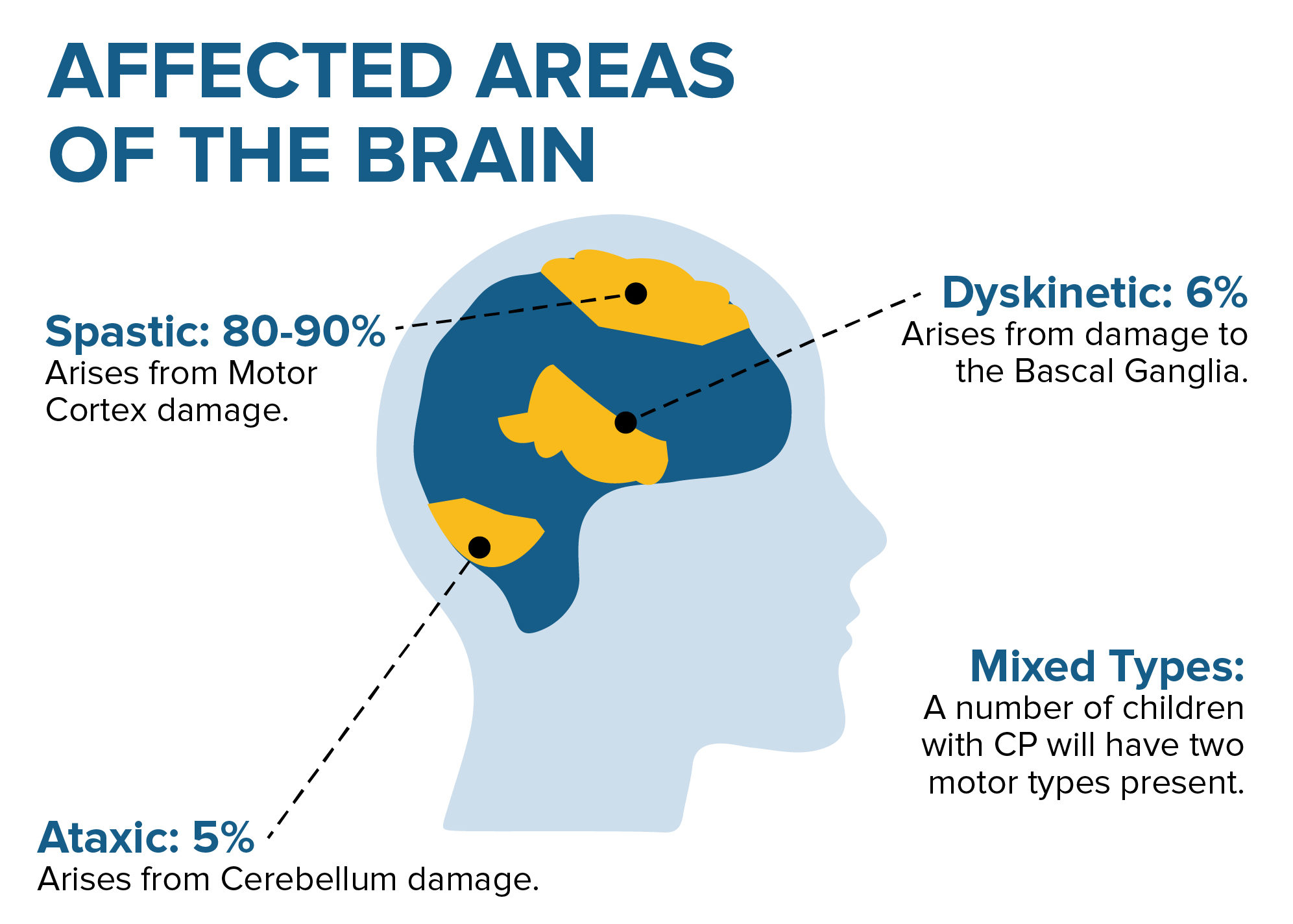
What parts of the body are affected by cerebral palsy?
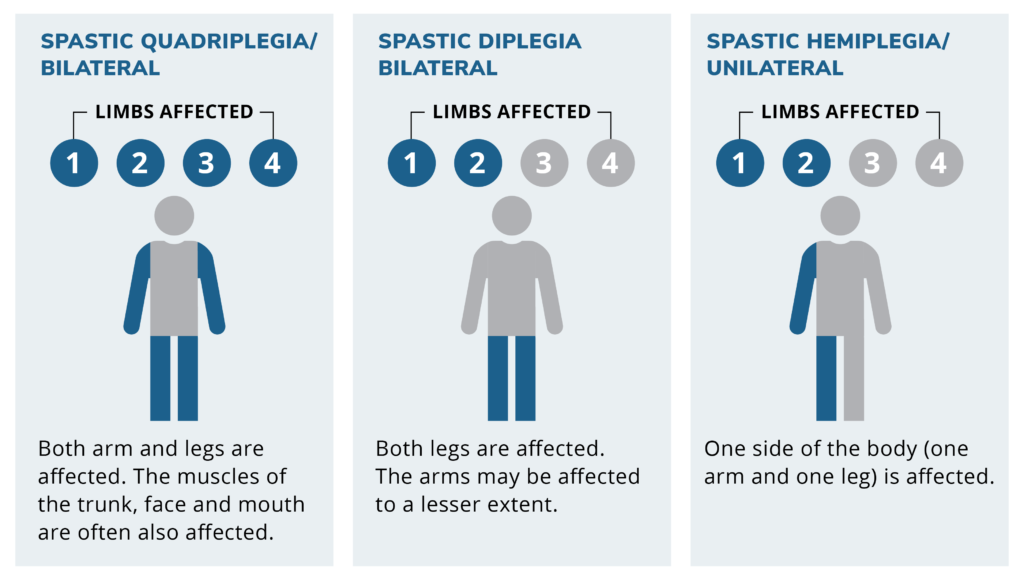
Spastic Cerebral Palsy affects different parts of the body.
- Quadriplegia: Both legs and both arms paralyzed or weakened equally
- Diplegia/Bilateral: Both legs affected (and possibly arms to a lesser extent)
- Hemiplegia/Unilateral: One side (arm and leg) affected
- Double Hemiplegia: Both arms affected more than the legs (uncommon)
What causes cerebral palsy?
Some examples of what can cause cerebral palsy include:
- Not enough oxygen reaching the brain of a fetus or newborn
- Head injury, usually the result of motor vehicle accidents, falls, or child abuse
- Drug addiction
- Brain infection
- Other risk factors including premature birth, low birth weight, blood type incompatibility between mother and infant, infection of the mother in early pregnancy, and micro-organisms that attack the infant’s central nervous system
Most causes of cerebral palsy are related to the developmental and childbearing processes and, since the condition is not inherited, the condition is called congenital cerebral palsy.
Can cerebral palsy be prevented?
Measures of prevention are increasingly possible today. It is very important for women to take care of themselves before becoming pregnant, receive medical care during pregnancy through childbirth, and protect infants from accidents or injury.
Preventive measures for pregnant women include:
- Routine testing and immunization of Rh factors
- Reduced exposure to viruses and other bacterial infections
- Immunization against measles
- Avoiding unnecessary exposure to X-rays, drugs, and medications
- Controlling diabetes, anemia, and nutritional deficiencies
- Preventing premature births
Do you want to learn more about cerebral palsy?
Find more resources at the Centers for Disease Control and Prevention and Mayo Clinic.
Can a child with cerebral palsy live a normal life?
Cerebral palsy affects each person in different ways. It is true that some people with cerebral palsy need to be cared for their entire lives through family and caregiver support. However, many adults can live full, independent lives or live mostly independently, only requiring help for specific needs.
There are people with cerebral palsy who:
-
- Attend and graduate from high school
- Attend and graduate from college
- Have successful careers
- Have their own families
- Play and excel at sports, including completing marathons

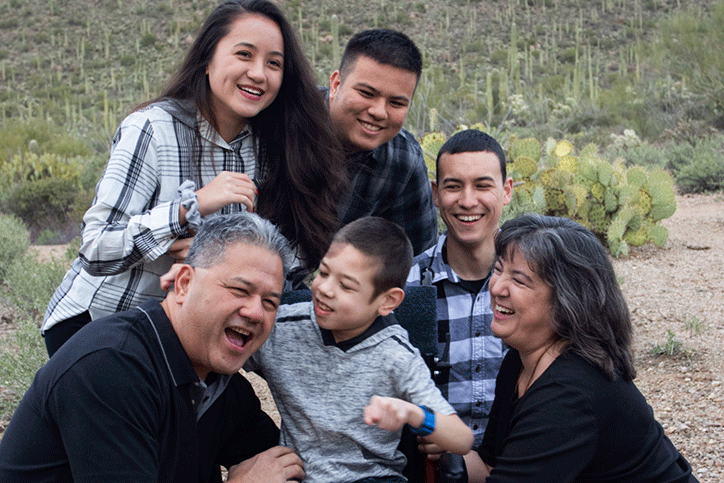
Four things you should know about cerebral palsy:
1. Cerebral palsy is not progressive
It does not get worse over time. However, secondary conditions can develop which, over time, may get better, get worse, or remain the same.
2. Cerebral palsy cannot be passed to another person
It is not a disease and should never be referred to as such.
3. Currently there is no cure for cerebral palsy
However, there are a number of assistive technology and treatment options, such as therapy, orthotics, and surgery, that should begin as early as possible through a management team of physicians, therapists, educators, nurses, social workers, and other professionals.
Learn more about our Early Intervention Services.
Learn more about Bellows Fellows grants for assistive technology.
4. As individuals get older, they may require support services that are essential to the developing adult
These services could include:
- Personal assistance
- Continuing therapy or counseling
- Educational and vocational training
- Independent living services
- Transportation
- Recreation or leisure programs
- Employment opportunities
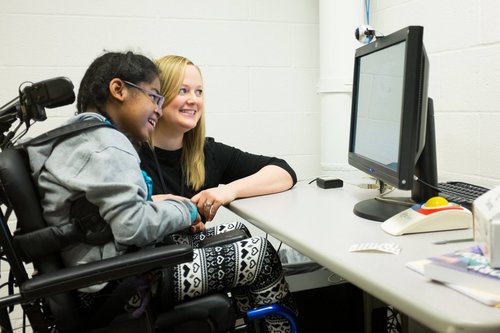
Donate Today
Join our mission to create an inclusive life for individuals with disabilities by donating to our programs.
Stay Updated
Join the United Cerebral Palsy Association of Hawai‘i ‘ohana and keep connected.
